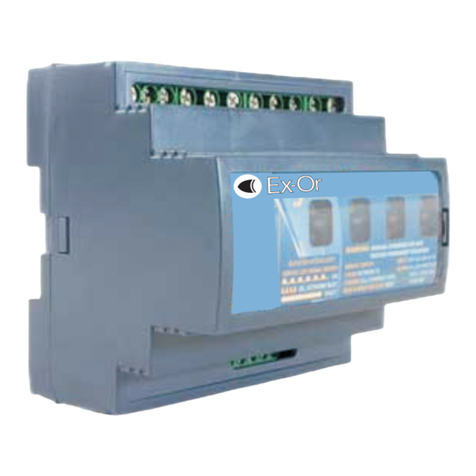
Tech-note
tn202-2.doc - 10.01.2012
ePALM10 Product Manual
3
1 Highlights
• Graphical display 120x64 pixels (up to 8 lines
20 characters)
• Highly visible transflective LCD display
• 27-keys keypad with tactile feedback
• Connection to industrial bus systems
• Large memory size (512 KB Flash)
• IP65 protection
• Includes mergency Stop button
• Includes enabling switches, normal or 3-
positions
• Available in version for connection to thernet
and Profibus DP
The ePALM HMI panels are the handheld prod cts of the UniOP family. All of the ePALM prod cts
s pport the rich common f nctionality of the UniOP operator panels:
• Versions available for connection to
Ethernet and Profib s DP. Ethernet
version allows connection to field devices
as well as programming the HMI from
Designer.
• Powerf l and int itive programming with
the UniOP Designer 6 software
• S pport of more than 130 comm nication
drivers for ind strial devices
• Transflective LCD display ens res
readability nder the most critical light
conditions
• Display dynamic data in n merical, text,
bargraph and graphic image formats
• Recipe data storage. Recipe data can be
transferred to a host comp ter sing the
Ethernet connection.
• M ltilang age applications. The n mber
of r ntime lang ages is limited only by the
available memory. All text information in
the application can be exported in Unicode
format for easier translation.
• Powerf l macro editor to config re
keypad operation
• Alarms and historical alarm list. Alarm
and event information can be printed or
transferred to a host comp ter sing the
Ethernet connection.
• Eight level password protection.
• Report printing to serial printer. Reports
are freely config rable sing Designer.
• Ethernet-based UniNet network to share
data between UniOP HMIs and to serve
data sing UniNet OPC Server.
In addition some niq e feat res make the
ePALM10 a perfect fit for handheld operation.
• Emergency Stop b tton. Hardwired.
• Enabling switches. Hardwired.
• High-q ality poly rethane cable for
mobile applications.





























